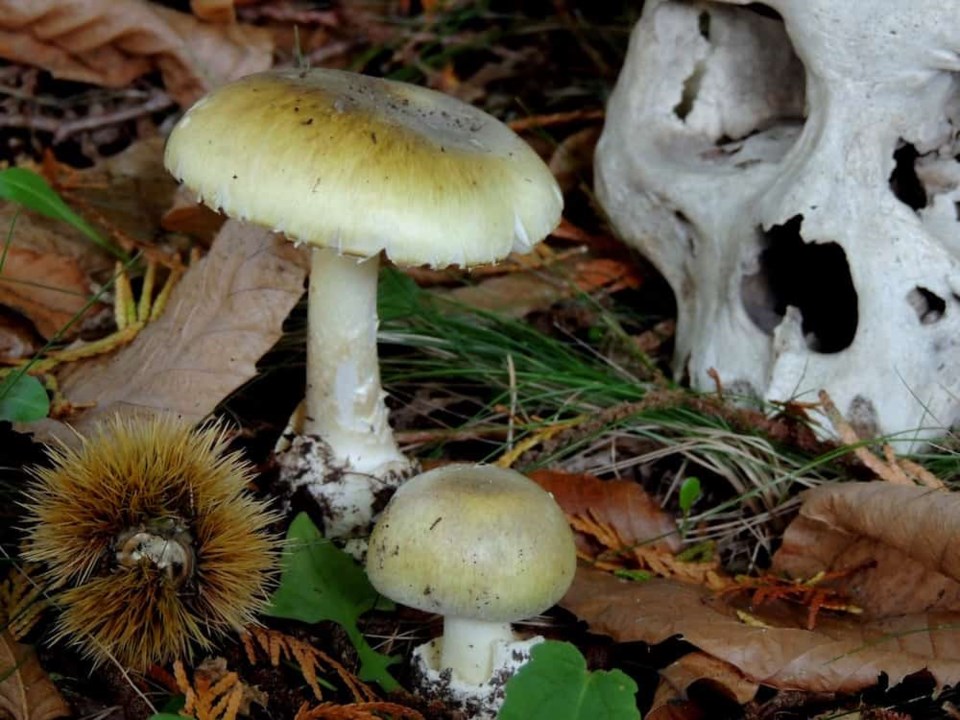While fall weather is perfect for chunky knit sweaters and pumpkin spice lattes, it also creates the ideal breeding grounds for the deadliest mushroom in the world.
Now the BC Centre for Disease Control is warning British Columbians to be aware that the poisonous "death cap" mushroom is often found in urban areas, and that the toxic fungus is especially dangerous around young children and pets.
The centre notes that calls to the BC Drug and Poison Information Centre (DPIC) for mushroom exposures in 2020 have been on par with previous years, according to a news release. However, there was a spike in June with 67 calls for mushroom exposures, double what was seen in previous years.
June saw significant rainfall this year, and mushrooms typically emerge during wetter months. With fall’s cooler and wetter weather, mushrooms can now be found in both urban areas and forests.
The death cap mushroom, which has the Latin name Amanita phalloides, is the most poisonous mushroom in the world and is easily mistaken for edible mushrooms like the paddy straw mushroom, found in Asia. Immature death caps can also look like edible puffballs.
A 2008 survey by the Vancouver Mycological Society found the death cap growing in many urban sites with more than 100 locations in the Vancouver area now known. They have also been reported in the Fraser Valley and on the Island. In 2016, a toddler died after eating death cap on Vancouver Island.
Pets are also susceptible to death caps. Last fall, a 16-week-old puppy suspected of eating them died on Vancouver Island. Two months later, a second puppy died after eating a death-cap mushroom.
The death cap contains toxins that damage the liver and kidney. Within six to 12 hours, people who ingest the mushroom can experience symptoms such as cramping; abdominal pain; vomiting; watery diarrhea; and dehydration.
After up to 24 hours, symptoms may disappear and you may feel fine for up to 72 hours. Symptoms of liver and kidney damage start to appear three to six days after mushroom ingestion.
This year, 36 per cent of mushroom exposure calls to the DPIC involved children five years and younger, compared with 60-67 per cent in past years.
"Typically around two-thirds of our mushroom calls involve children five and under, so parents and caregivers need to be mindful of what's on the ground where their kids are playing. But this year we have noticed an increase in mushroom calls involving adults," said Raymond Li, a pharmacist with DPIC.
The BCCDC adds that there are many other varieties of wild mushrooms that are less toxic than death caps but can also cause severe illness. As such, people are reminded to be cautious when out foraging or gathering mushrooms.
“Mushroom enthusiasts have noticed many mushrooms just beginning to emerge after a dry early fall and a slow start to the usual autumn mushroom season,” said mycologist Paul Kroeger. “Foragers should remember one basic rule: never eat anything that hasn't been identified with certainty. A mistake can have serious or even deadly consequences."
If you suspect mushroom poisoning, call poison control immediately at 1-800-567-8911.
Report death cap mushrooms growing in your neighbourhood. Note the location, take photographs and make a report to the Invasive Species of Concern.



